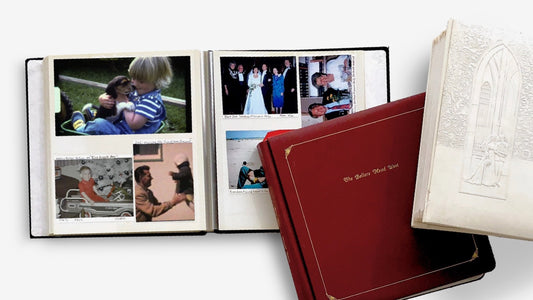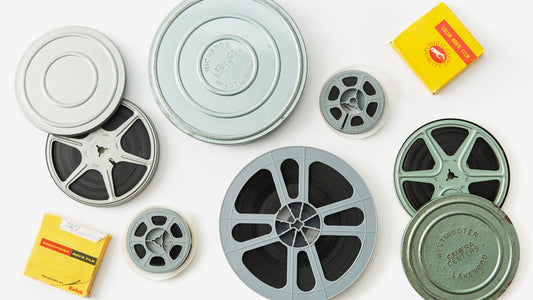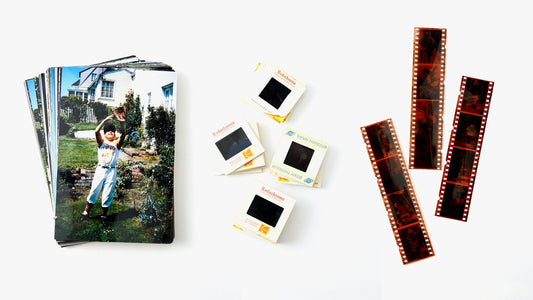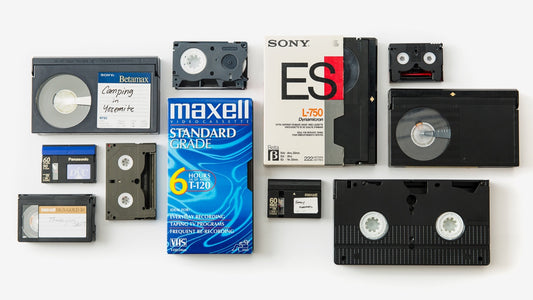Have you ever stumbled upon a box of old photos and wondered about those mysterious strips of film tucked away inside? Those are negative photos, and they hold a special significance in preserving family history. More than just faded relics, negative photos capture moments in time with unique detail, acting as a tangible connection to memories. In this post, we'll explore what negative photos are, why they're important, and how you can preserve these precious pieces of your family's story. We'll also delve into the artistic potential of negatives and how they've evolved alongside photography itself. Join us as we uncover the secrets held within those seemingly simple strips of film.
Key Takeaways
- Preserve your family history by storing negatives properly. Keep them cool, dry, and dark, using archival-quality sleeves and boxes. This protects them from damage and ensures your memories stay vivid.
- Modernize your memories by digitizing your negatives. Scanning creates digital copies that are easy to share, edit, and preserve, safeguarding them from loss or damage. Services like YesVideo can help with this process.
- Negatives offer unique artistic opportunities. Explore creative techniques like image inversion or focus on negative space to add an artistic flair to your family photos and create truly unique keepsakes.
What Are Negative Photos?
Have you ever discovered a collection of old photo negatives tucked away in a forgotten box? These strips of film, often a confusing mix of orange and grey tones, hold a special place in preserving family history. They're more than just faded relics; they're a tangible connection to memories, capturing moments with unique detail. But what exactly are negative photos, and why are they so important?
Defining Negative Photos
A photographic negative is simply an image, usually on a transparent plastic strip (film), where light and dark areas are reversed. The bright parts of the original scene appear dark on the negative), and the dark parts appear light. Think of it as the inverse of the real-life image. This reversal is key to understanding how photographs were traditionally made. Negatives were the master copy, used to create positive prints.
The Science of Negatives
This "opposite" look of negatives results from how film reacts to light. When you snap a picture with a film camera, light enters the lens and hits the film, which is coated with light-sensitive chemicals. Areas exposed to brighter light react more, causing them to darken. Areas exposed to less light stay lighter on the film. This creates the reversed image we see on a negative. It's like a secret code, waiting to be deciphered to reveal the true image. This process, while seemingly complex, underpins traditional photography and allows for multiple prints from a single negative.
How Do You Create Negatives?
Creating photographic negatives is a fascinating blend of art and science. It involves capturing light onto film and then using chemical processes to develop a reversed image—the negative—which you can then use to make prints. Let's explore the two key stages:
Film and Light Exposure
The journey of a negative begins with light. When you take a picture with a film camera, light enters through the lens and strikes the film. This film is coated with a light-sensitive emulsion containing silver halide crystals. When light hits these crystals, it forms a latent image—an invisible record of the light patterns. The amount of light reaching the film, determined by the exposure settings, is crucial. Correct exposure ensures the resulting negative has enough detail in both the highlights and shadows. Color negative film adds another layer of complexity. Its three emulsion layers are each sensitive to different colors of light (red, green, and blue), allowing the capture of a full-color image. Getting the right balance is key to a quality negative.
Chemical Processes
Once the film has been exposed, the magic of chemistry takes over. The exposed film is developed using a series of chemical baths. The first bath, the developer, converts the latent image formed by light exposure into a visible image. It does this by transforming the exposed silver halide crystals into metallic silver, creating the dark areas on the negative. The stop bath halts the development process. Finally, a fixer removes the unexposed silver halide crystals, leaving a stable negative image unaffected by further light exposure. This entire process requires careful attention to timing and temperature, since these factors influence the final negative's density and contrast. Different film types and developing techniques can achieve specific looks, from high contrast to soft tones, adding an artistic dimension. Even alternative printing processes like cyanotype rely on these fundamental chemical processes to create stunning prints.
Types of Negatives
Negatives come in a few different forms, each with its own characteristics. Understanding these distinctions can help you appreciate the photographic process and how your family memories were captured. Let's explore the main types.
Black and White Negatives
Black and white negatives, created using black and white film, showcase a classic look. The magic lies in the reversal of light and dark areas. Dark areas on the negative correspond to the light areas in the final print, and vice versa. This contrast creates a timeless feel, capturing fine details and subtle shades of gray. Think of those iconic black and white portraits–the depth and drama often come from this interplay of light and shadow.
Color Negatives
Color negatives, produced on color film, introduce a fascinating twist. The colors are inverted, appearing as their complementary colors on the negative. A bright red in a photo shows up as cyan on the negative; green becomes magenta, and blue transforms into yellow. This inversion results from the chemical processes involved in color film development. When you send color negatives for digitization with a service like YesVideo, this color inversion is reversed, bringing your vibrant memories back to life.
Slide Negatives
Slide negatives, also known as transparencies, are a unique type of positive film. Unlike traditional negatives, slide film captures the image in its original colors. These can be viewed directly when projected, offering vibrant and accurate color reproduction. Families often used them for presentations and sharing special occasions with a larger audience. Because slide film captures the image directly, the colors are often richer and more saturated than those from color negatives.
Why Are Negatives Important?
Negatives often get overlooked in the age of digital photography, but they hold a special place in preserving family history. They're more than just strips of film; they're a tangible link to the past, offering a unique perspective on how we capture and cherish memories.
Creating Prints
Think of a negative as the master copy of your image. Light areas appear dark, and dark areas appear light—it's a photographic inverse. This unique characteristic is precisely what allows us to create prints. By shining light through the negative) onto photographic paper, we reverse the process, bringing your memories to life in a tangible form. The negative acts as a template, ensuring that every print accurately reflects the original scene. It's the foundation upon which your physical photos are built.
Archival Value and History
Negatives hold significant archival value. They're the original capture of a moment in time, containing more image data than a print. Historically, negatives were crafted on glass or even paper. Today, plastic film is the most common material. Regardless of the material, the negative remains the source, carefully stored to produce countless prints over time. This makes preserving your negatives crucial for maintaining the integrity of your family history. They're the raw, unedited record of your memories, offering a glimpse into the past that prints simply can't replicate. YesVideo understands this inherent value and treats every negative with the utmost care during our photo transfer process.
Emotional Family Connections
Beyond their technical importance, negatives have a profound emotional impact. They connect us to our family history in a tangible way. Holding a negative, you're holding a piece of the past, a direct link to the moment the photo was taken. Digitizing these negatives allows you to share these moments with future generations, creating a lasting legacy. It's more than just preserving memories; it's about sharing stories, sparking conversations, and fostering connections across generations. Digitizing and organizing family photos strengthens bonds and ensures that these precious memories remain alive and accessible for years to come.
Converting Negatives to Prints
Getting prints from your negatives involves a few different approaches. Let's explore two main paths: traditional darkroom techniques and modern digital scanning.
Darkroom Techniques
Creating prints in a darkroom is the original method, offering a hands-on experience. It involves shining light through the negative onto photographic paper. The paper reacts to the light, darkening where the light shines through. This process reverses the negative image, resulting in a positive print. It's a bit like the science behind how film cameras work, just in reverse! While darkroom printing can be a rewarding hobby, it requires specialized equipment and knowledge. Historically, negatives were often made on glass plates, or even paper in the very early days of photography). Now, you're most likely working with negatives on plastic film.
Digital Scanning
These days, converting negatives to digital files is a popular and versatile choice. High-quality scanners can capture the detail from your negatives, creating digital images that you can then print at home or through a photo printing service. This method also makes sharing your photos online incredibly easy. Plus, having digital backups provides extra security for your precious memories. YesVideo's photo transfer service is a great option if you're looking for a professional and reliable way to digitize and preserve your photo negatives. Digitizing old photos and negatives is becoming increasingly important, offering a way to safeguard these fragile pieces of your family history. It's more than just preservation; it's about reconnecting with your past and sharing those special moments.
Preserving Your Negatives
Negatives are a tangible link to the past, capturing precious family moments. But they're delicate and require specific care to last. Let's explore some practical steps to ensure your negatives remain in top condition for generations.
Proper Storage
Think of your negatives as tiny time capsules—they need a safe, stable environment. The ideal location is cool, dry, and dark, away from fluctuating temperatures and humidity. Avoid attics, basements, and garages, as these areas are prone to temperature swings and moisture. Instead, choose a climate-controlled area within your home, like a closet or drawer.
Archival-quality storage materials are key. Invest in acid-free sleeves and boxes designed for photographic negatives. These protective enclosures shield your negatives from dust, dirt, and chemical breakdown. Avoid using regular plastic bags or containers, as these can release harmful chemicals over time, damaging the film. Proper storage is the cornerstone of preserving your family history.
Environmental Factors
Environmental factors significantly impact the longevity of your negatives. High temperatures and humidity can cause irreversible damage, leading to mold growth, color fading, and film deterioration. Ideally, aim for a storage environment with a consistent temperature below 70°F and relative humidity between 30-50%. Consider a dehumidifier if you live in a humid climate. This creates a stable environment for these irreplaceable memories.
Light exposure is another threat to negatives. Direct sunlight can fade images and cause discoloration. Store your negatives in opaque containers and avoid exposing them to bright light for extended periods. This preserves the image integrity and prevents fading. Protecting your negatives from these elements is crucial for their long-term survival.
Handling Tips
Handling negatives requires a gentle touch. Always wear clean cotton gloves when handling film. The natural oils and acids on your skin can transfer to the negatives, causing smudges and fingerprints that are difficult to remove. Hold negatives by the edges, avoiding the image area.
Avoid bending or folding the negatives, which can create creases and cracks. If a negative curls, gently flatten it using a photo flattening tool or by placing it between two heavy, flat objects, like books. When viewing negatives, use a lightbox or a light table to illuminate the images without direct contact. Following these simple handling tips helps preserve your negatives for years.
Digitizing Your Negatives
Negatives offer a glimpse into the past, capturing fleeting moments in time. But these fragile pieces of film are susceptible to damage and deterioration. Digitizing your negatives is the best way to safeguard these precious memories for generations to come. It’s like giving your family history a safety net.
Benefits of Digital
Think of digitizing your negatives as future-proofing your memories. Digital files are easily copied, shared, and backed up, unlike physical negatives that can fade or be lost. Plus, digital photos can be easily enhanced, edited, and shared online with family and friends near and far. Imagine rediscovering a faded photo of your grandparents and being able to restore it to its former glory—digitization makes this possible. It’s more than just preservation; it’s about bringing those memories back to life and reconnecting families with their history. Digitizing photos fosters those special bonds across generations.
Scanning Methods and Equipment
You have a couple of options when it comes to digitizing your negatives. You can invest in a photo scanner designed to handle negatives, which gives you control over the process. These scanners come in a range of prices and capabilities, so you can find one that fits your budget and technical skills. Alternatively, you can use a professional photo digitization service like YesVideo. This is a great option if you have a large number of negatives or prefer to leave the technical aspects to the experts. YesVideo handles everything with care, ensuring your precious memories are preserved in the highest quality.
Preserving Family History
Those old negatives aren't just pictures; they're portals to your family's story. They hold the memories, connections, and moments that shaped who you are today. By digitizing these snapshots, you're not just saving images—you're creating a tangible link to your past that future generations can cherish. Giving your family this window into their history is a priceless gift. You're weaving together the threads of your family's narrative, ensuring those stories are never forgotten.
Artistic Uses of Negatives
Beyond their practical uses, photo negatives offer unique artistic possibilities. Thinking outside the box with your negatives can lead to interesting visual effects and a fresh perspective on your family memories.
Negative Space
Negative space is the area surrounding the main subject of a photograph. It's not simply empty space—it's a crucial element of composition. A well-composed photo uses negative space to draw your eye to the subject and create balance. When looking at a negative, the negative space appears dark, while the subject is lighter. This offers a unique way to appreciate the composition and how the photographer framed the shot. For a deeper understanding of negative space, explore online photography guides.
Creative Image Inversion
One of the most striking artistic applications for negatives is image inversion. This involves reversing the colors and tones, essentially creating a positive image with inverted colors. This technique creates a surreal, dreamlike effect, transforming familiar faces and scenes into something new. With color negatives, the inversion process also reverses colors into their complementary colors—red becomes cyan, blue becomes yellow, and so on. This can produce unexpected and visually stunning results, giving new life to old family photos. You can find more information on negative photography and color inversion) online. Consider image inversion to add an artistic touch to your family history preservation project.
The Evolution of Negatives
From Film to Digital
Remember those little strips of film we used to get back from the photo developer? Those are negatives, a fascinating piece of photographic history. A negative is simply an image where the light and dark areas are reversed—bright parts of the original scene look dark, and dark parts look light. This principle remains the same whether we're talking about traditional film or digital images. While film negatives are less common these days, digital cameras and editing software can still create negative images. This shift to digital has given photographers incredible control over images, allowing for easy adjustments to colors and brightness. But even with these advancements, the core concept of the negative image—capturing a moment in inverted form—remains a fundamental part of photography's evolution. To learn more about the technical aspects of negative photography, take a look at this Wikipedia article).
The Value of Film
So, why are these little strips of film so important? Film negatives offer the highest possible image quality. Since prints made directly from the original negative maintain the most detail and clarity, they're the best way to preserve memories. Making copies from copies, especially with older photos, can lead to a noticeable loss of quality. This is why preserving your original negatives is crucial for protecting your family history—they're the purest record of those precious moments. Plus, understanding how negatives work—how the dark areas represent light and vice versa—gives you a deeper appreciation for the artistry and technical skill involved in traditional photography. For a simple explanation of why these inverted images are called "negatives," check out this helpful article. YesVideo's film transfer service can help you safeguard these irreplaceable memories by converting them to a safe, digital format. For a more in-depth look at the significance of negatives, this Reddit thread offers some great insights. Think of your negatives as the master copies of your memories—the key to preserving those images for generations to come.
Related Articles
Frequently Asked Questions
Why are my old photos and negatives orange and faded?
Over time, color dyes in photos and negatives can deteriorate, causing a shift in color balance, often appearing as a yellowish or orange tint. This is especially true for negatives and prints that weren't stored properly. Fading can also occur due to light exposure.
What's the difference between a negative and a print?
A negative is the original image captured on film. It shows a reversed image where light areas appear dark and dark areas appear light. A print is made from the negative, showing the image as it appeared in real life. Think of the negative as the master copy and the print as a reproduction.
Can I make prints from digital photos?
Absolutely! While digital photos don't involve negatives in the traditional sense, you can easily print them using a home printer, an online printing service, or a local photo lab. The quality of the print depends on the resolution of the digital image and the printing method used.
What's the best way to store my negatives long-term?
Keep your negatives in a cool, dry, and dark place. Ideally, use archival-quality, acid-free sleeves and boxes specifically designed for photo storage. Avoid storing them in attics, basements, or garages, as these areas are prone to temperature fluctuations and humidity.
Why should I digitize my old photos and negatives?
Digitizing creates a safe backup of your precious memories, protecting them from damage, loss, or deterioration. Digital files are also much easier to share with family and friends, and they can be enhanced or restored if needed. It's a great way to preserve your family history for future generations.











